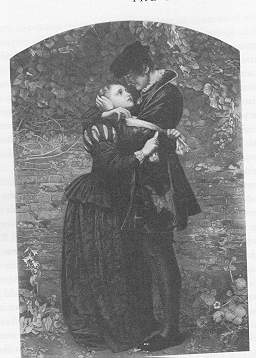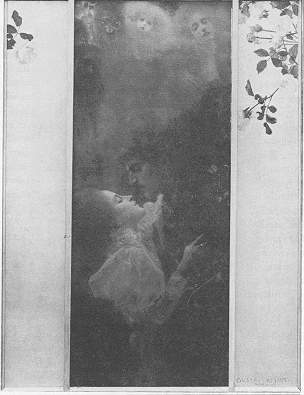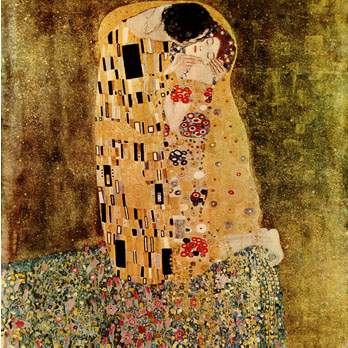
|
A Huguenot exhibits
three stereotypical characteristics of love in mid-nineteen-century
art. First, it is emphatically narrative. Its exquisite
lovers exchanging intense gazes are posed to emphasize the poingnancy
of this particular moment on the eve of a massacre which actually
took place in Paris on Aug. 24, 1572, and which promises to end the
man's life. Secondly, the danger to love comes from without, ...The implied moral is that love would reign supreme if only the external obstacles of ...could be surmounted.... Thirdly, there is no pictorial significance attaching to "the between," the space between the lovers. It is, in the language of art criticism, "negative space," incidental to the relationship between the lovers.
|
 Gustav Klimt |
|

Gustav Klimt, Love, 1985 "Klimt's positive and deficient love set in a minimally narrative time frame and more exclusively aesthetic space marks a transition between 19th-century story-telling and later, more explicit, renderings of encounter" (54) |

Gustav Klimt, The Kiss, 1908 or 1911 Osterreichische Galerie, Vienna |